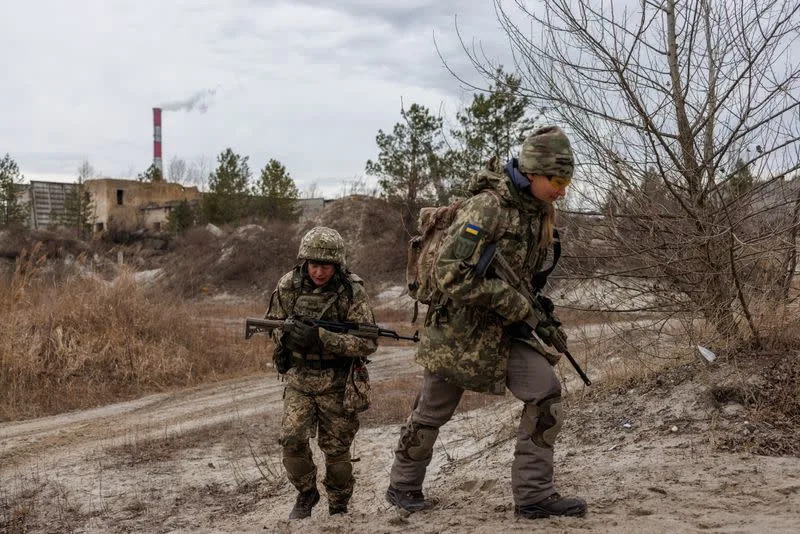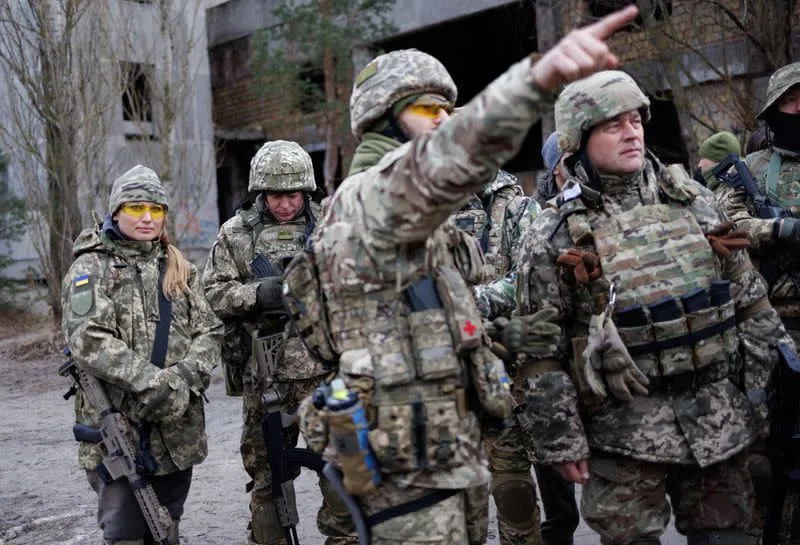Reuters
A Ukrainian reservist learns fighting skills she hopes never to use
Maria Tsvetkova – February 20, 2022





Alisa, a media relations specialist, poses with a gun for a picture at her home near Kyiv. Alisa takes part in a combat skills training conducted by the Territorial Defense Forces near Kyiv
KYIV (Reuters) – Alisa, a 38-year-old Ukrainian with an office job in the capital, had always enjoyed sport shooting and joined a local territorial defence unit more than a year ago to acquire combat skills.
Now she is worried she might have to use those skills in a real war with Russia.
“People die, that’s horrible. Even worse is when you think not just about your life but about the life of a 7-year-old child,” she said in an interview with Reuters in her house outside Kyiv while her son, Timur, watched cartoons.
“I realise he can be hurt because of silliness of the neighbouring country, not a brother country anymore,” said Alisa, who asked to be identified only by her first name.
Russia’s build-up of tens of thousands of troops near the borders with Ukraine has stirred fears in Ukraine and Western countries that it is poised to invade, something Moscow denies.
Alisa joined the territorial defence forces a year and a half ago, earlier than many. In January, as the Russian troops massed, the government said it wanted to build reserve batallions up into a corps of up to 130,000 people.
Alisa said she has seen dozens of new people joining the training sessions each Saturday.
She began this weekend as she often does, putting on camouflage fatigues, taking one of her two small-calibre guns she keeps at home and heading to a training ground – a pine forest with sand dunes, an old railway and few abandoned construction sites.
Along with dozens of other volunteers, mostly men in their late 30s and 40s with civilian jobs, she then spent seven hours either with her weapon on the ground or on guard as a part of a small patrol tasked to protect a concrete building from enemy saboteurs.
She said the fact she has at least basic training is some comfort.
“If, God forbid, a war starts … I know how to move from an unsafe point A to a safe point B,” Alisa said.
“I understand how to do if I’m under fire. I know how to help Timur, friends, neighbours if they are caught in fire.”
EARLY STARTS
Alisa, a motorcycle fan, has visited more 50 countries along with her husband, also a biker. She is a media relations specialist at an organization that works in cyber security.
She tries not to skip training sessions herself even if she badly needs rest at the end of the working week.
“If we had peace time I would miss training if I was tired but now I make myself get up early for a session because now it’s needed more than ever,” she said.
Alisa said she likes gaining new skills that have built her self-confidence and courage, but hopes never to have to use them.
“I feel anger, hatred and I have my plans cancelled. It’s all surreal for me and I don’t get how such silly things can happen in a civilized world in the 21st century,” she said.
(Reporting by Maria Tsvetkova; Editing by Frances Kerry)
